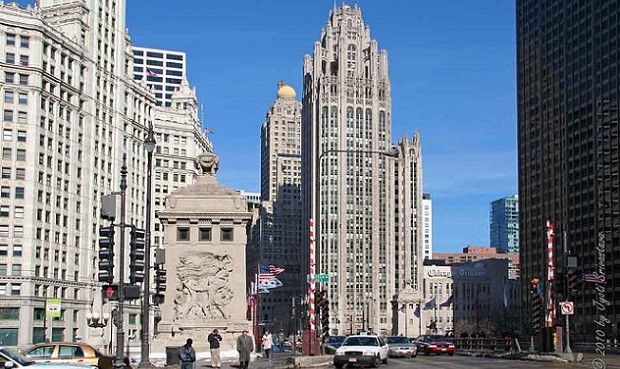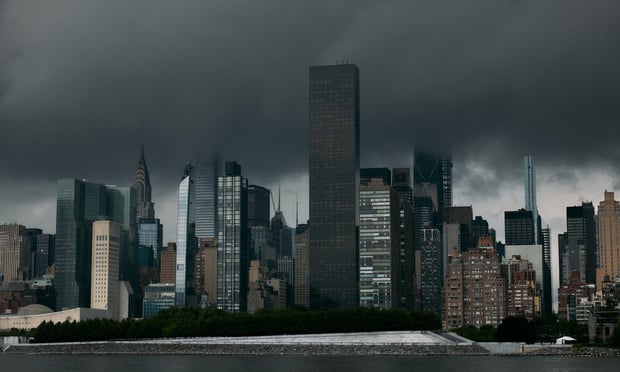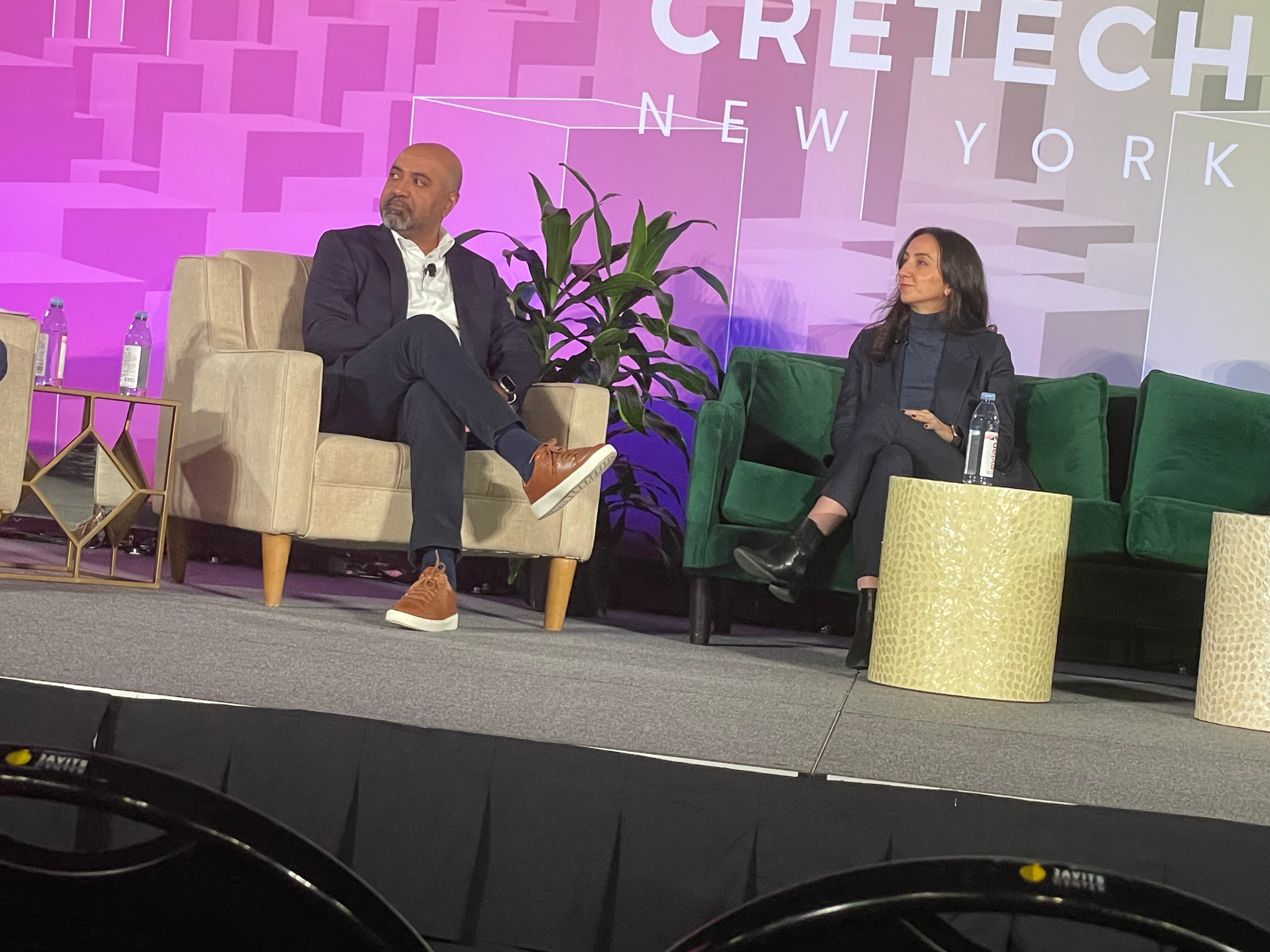 CHICAGO—With a frontrunner emerging in the proposed sale of the iconic Tribune Tower, the plan to transform it has also gotten clearer. CIM Group and its partner Golub & Co. , the reported buyers, will pay about $250 million and probably transform the site of the 1920s-era office building into a mixture of residences, stores and a hotel. The two companies recently formed a partnership to build a 41-story multifamily residential tower at 1001 S. State St. in Chicago's South Loop neighborhood, currently under construction. The likely sale and transformation of the Tribune Tower would be one of several instances of a downtown owner choosing another use over office, and economic forecasts show those choices can be solid ones. “When we look across these three sectors, office is definitely the weakest,” Jon Southard , ForeGround new Commercial Real Estate Economics group NORC at the University of Chicago Foreground recently examined the Chicago market and found that the expected annual rent growth for the apartment sector was 4.9% over the next five years. In addition, rental rates for retail spaces are expected to grow at 2.5%. By comparison, offices are expected to grow at 1.8% over the next five years. That doesn't mean, of course, that residences or retail are always to be preferred. ForeGround was looking in this case at the strengths and weaknesses of the Chicago-area market as a whole. For example, “the New York downtown has seen this type of movement,” from office into residential and retail, Southard says. But even there, where the gap between expected gains in residential and office rents is larger, developers frequently choose to renovate or upgrade office space rather than convert. And in the Chicago area, “there is more room to make either decision.” Still, there are noticeable trends in place that can guide decisions. When it comes to retail, “we're examining how much purchasing power is in Chicago,” says Southard. And what jumps out from the numbers is that even though there has been an overall recovery from the economic downturn, new construction in retail has lagged. “There really hasn't been that comeback in Chicago.” During the last recovery from a downturn, from 2004 to 2008, the metro area saw more than 35 million square feet of retail completions, according to ForeGround data. But between 2011 and 2015, retail developers only finished 11.7 million square feet of new space. Therefore, even with the rise of e-commerce, and the pressure that has put on bricks-and-mortar outlets, Southard believes “now is a good time to think about new retail.”
CHICAGO—With a frontrunner emerging in the proposed sale of the iconic Tribune Tower, the plan to transform it has also gotten clearer. CIM Group and its partner Golub & Co. , the reported buyers, will pay about $250 million and probably transform the site of the 1920s-era office building into a mixture of residences, stores and a hotel. The two companies recently formed a partnership to build a 41-story multifamily residential tower at 1001 S. State St. in Chicago's South Loop neighborhood, currently under construction. The likely sale and transformation of the Tribune Tower would be one of several instances of a downtown owner choosing another use over office, and economic forecasts show those choices can be solid ones. “When we look across these three sectors, office is definitely the weakest,” Jon Southard , ForeGround new Commercial Real Estate Economics group NORC at the University of Chicago Foreground recently examined the Chicago market and found that the expected annual rent growth for the apartment sector was 4.9% over the next five years. In addition, rental rates for retail spaces are expected to grow at 2.5%. By comparison, offices are expected to grow at 1.8% over the next five years. That doesn't mean, of course, that residences or retail are always to be preferred. ForeGround was looking in this case at the strengths and weaknesses of the Chicago-area market as a whole. For example, “the New York downtown has seen this type of movement,” from office into residential and retail, Southard says. But even there, where the gap between expected gains in residential and office rents is larger, developers frequently choose to renovate or upgrade office space rather than convert. And in the Chicago area, “there is more room to make either decision.” Still, there are noticeable trends in place that can guide decisions. When it comes to retail, “we're examining how much purchasing power is in Chicago,” says Southard. And what jumps out from the numbers is that even though there has been an overall recovery from the economic downturn, new construction in retail has lagged. “There really hasn't been that comeback in Chicago.” During the last recovery from a downturn, from 2004 to 2008, the metro area saw more than 35 million square feet of retail completions, according to ForeGround data. But between 2011 and 2015, retail developers only finished 11.7 million square feet of new space. Therefore, even with the rise of e-commerce, and the pressure that has put on bricks-and-mortar outlets, Southard believes “now is a good time to think about new retail.”  CHICAGO—With a frontrunner emerging in the proposed sale of the iconic Tribune Tower, the plan to transform it has also gotten clearer. CIM Group and its partner Golub & Co. , the reported buyers, will pay about $250 million and probably transform the site of the 1920s-era office building into a mixture of residences, stores and a hotel. The two companies recently formed a partnership to build a 41-story multifamily residential tower at 1001 S. State St. in Chicago's South Loop neighborhood, currently under construction. The likely sale and transformation of the Tribune Tower would be one of several instances of a downtown owner choosing another use over office, and economic forecasts show those choices can be solid ones. “When we look across these three sectors, office is definitely the weakest,” Jon Southard , ForeGround new Commercial Real Estate Economics group NORC at the University of Chicago Foreground recently examined the Chicago market and found that the expected annual rent growth for the apartment sector was 4.9% over the next five years. In addition, rental rates for retail spaces are expected to grow at 2.5%. By comparison, offices are expected to grow at 1.8% over the next five years. That doesn't mean, of course, that residences or retail are always to be preferred. ForeGround was looking in this case at the strengths and weaknesses of the Chicago-area market as a whole. For example, “the
CHICAGO—With a frontrunner emerging in the proposed sale of the iconic Tribune Tower, the plan to transform it has also gotten clearer. CIM Group and its partner Golub & Co. , the reported buyers, will pay about $250 million and probably transform the site of the 1920s-era office building into a mixture of residences, stores and a hotel. The two companies recently formed a partnership to build a 41-story multifamily residential tower at 1001 S. State St. in Chicago's South Loop neighborhood, currently under construction. The likely sale and transformation of the Tribune Tower would be one of several instances of a downtown owner choosing another use over office, and economic forecasts show those choices can be solid ones. “When we look across these three sectors, office is definitely the weakest,” Jon Southard , ForeGround new Commercial Real Estate Economics group NORC at the University of Chicago Foreground recently examined the Chicago market and found that the expected annual rent growth for the apartment sector was 4.9% over the next five years. In addition, rental rates for retail spaces are expected to grow at 2.5%. By comparison, offices are expected to grow at 1.8% over the next five years. That doesn't mean, of course, that residences or retail are always to be preferred. ForeGround was looking in this case at the strengths and weaknesses of the Chicago-area market as a whole. For example, “the
Want to continue reading?
Become a Free ALM Digital Reader.
Once you are an ALM Digital Member, you’ll receive:
- Breaking commercial real estate news and analysis, on-site and via our newsletters and custom alerts
- Educational webcasts, white papers, and ebooks from industry thought leaders
- Critical coverage of the property casualty insurance and financial advisory markets on our other ALM sites, PropertyCasualty360 and ThinkAdvisor
Already have an account? Sign In Now
*May exclude premium content© 2024 ALM Global, LLC, All Rights Reserved. Request academic re-use from www.copyright.com. All other uses, submit a request to [email protected]. For more information visit Asset & Logo Licensing.








